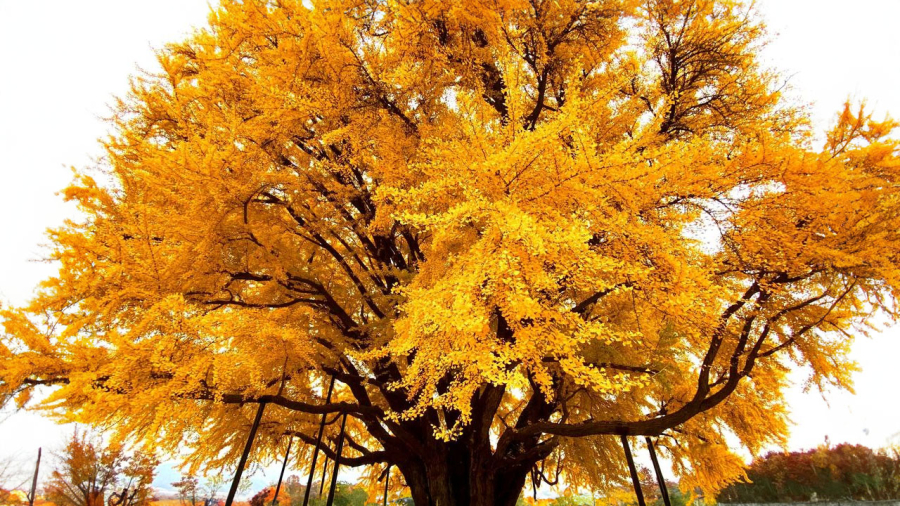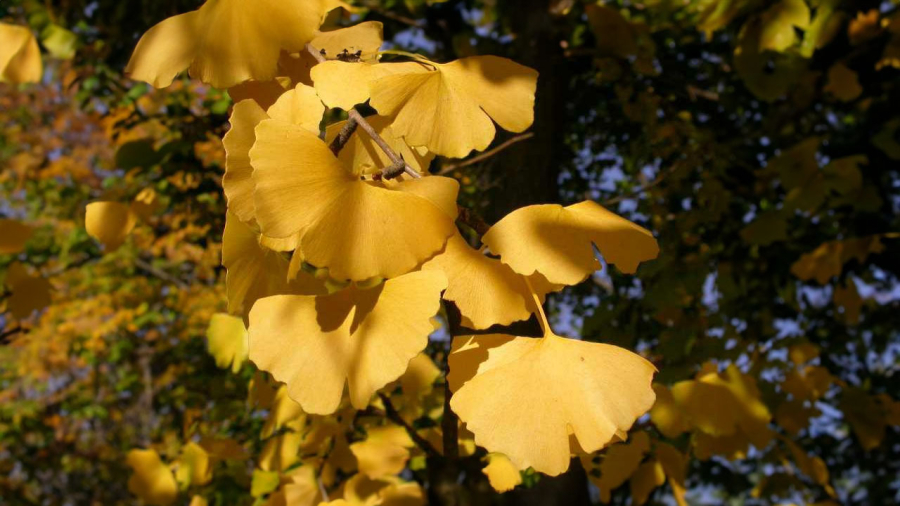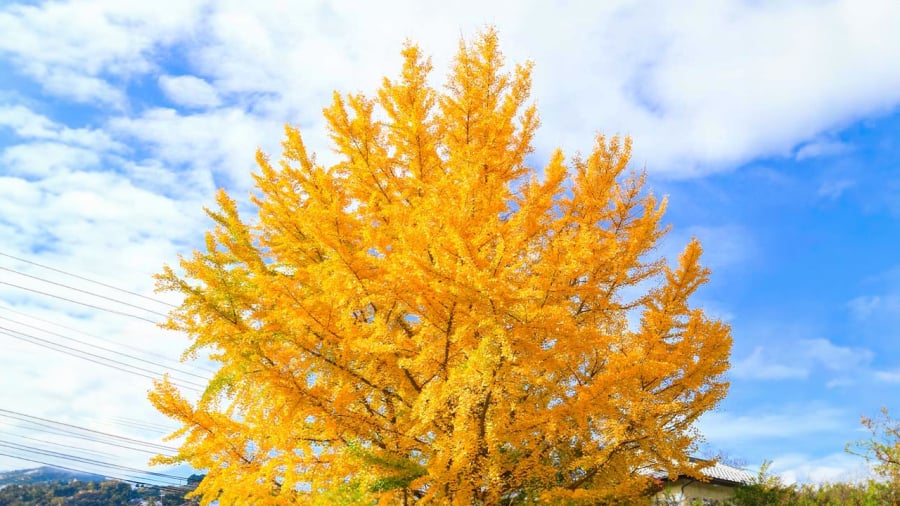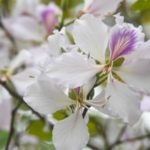Bạch quả is a type of tree with origins from China and is most commonly found in cold regions such as China and South Korea. Its leaves are fan-shaped, which is why it is also known as the fan-shaped tree. During autumn, the tree’s leaves turn a shimmering golden color, as if a thousand gold coins were hanging in the house. Bạch quả is also known as the “silver berry” or the “apricot tree.”
The bạch quả tree is a long-lasting species with a history of 200 million years. It later became popularly cultivated on the streets of Japan and China, South Korea, and some European countries.

The Feng Shui significance of the bạch quả tree
During spring and summer, the bạch quả tree is lush green. The tree symbolizes resilience and strength, fearlessly overcoming any difficulties and challenges. Bạch quả represents strength, vitality, and a strong will to live. In Japan, during the atomic bombing of Hiroshima in 1945, despite the countless deaths, the bạch quả tree remained resilient, growing and developing.
In the belief of many Buddhists, bạch quả is also a symbol of Buddha.
In autumn, when the bạch quả leaves turn yellow and hang gracefully on the tree, they shine brightly as if made of real gold. Therefore, bạch quả symbolizes wealth and prosperity.
Bạch quả also symbolizes longevity and lucky prosperity. Having a bạch quả tree in the house attracts wealth and positive energy while promoting the health and harmony of the family. Bạch quả is also a feng shui plant that wards off negative energies and brings in positive energy.

The medical value of the bạch quả tree
In addition to its feng shui significance as a landscape plant, bạch quả is also a rare and valuable medicinal plant. The extract from bạch quả has become a special medicine for preventing stroke, promoting blood circulation, protecting the cardiovascular system, and fighting against aging.
In traditional medicine, bạch quả is used to support anti-aging, treat numbness in the limbs, improve blood circulation, boost the immune system, and enhance memory.
In the field of beauty, bạch quả appears in products that support anti-aging and improve skin health, as well as enhance sexual performance.

Is it possible to grow bạch quả in Vietnam?
In recent years, bạch quả tree varieties have been developed and sold in the Vietnamese market by ornamental plant businesses.
Bạch quả is suitable for the northern provinces of Vietnam with a cool and mild climate, including cold winters.
Bạch quả is a tall, woody tree that can live for hundreds of years and grow up to several tens of meters high. Therefore, bạch quả is often chosen as a landscape plant for parks and urban areas, as well as in villas and houses with gardens.
Therefore, if you are a fan of the bạch quả tree, it is entirely possible to grow it in Vietnam, and the tree varieties are readily available for purchase.

How to plant and care for the bạch quả tree
Bạch quả is a robust and tall woody tree with strong roots that penetrate deep into the ground. The silver berry tree can be propagated through branch cuttings, seed germination, or by purchasing bạch thảo trees grown from seeds.
However, seed germination takes a long time, so most people prefer to buy mature trees. To care for bạch quả, pay attention to the following:
Temperature: Bạch quả is suitable for cool climates. Although adult trees can withstand drought and heat, young trees prefer a cool and humid environment. Therefore, during summer, it is advisable to cover the soil around the tree with straw or coconut husks to keep it cool.

Light: Bạch quả is a light-loving tree, so it should be planted in a location with good sunlight.
Watering: Bạch quả likes moisture but cannot tolerate waterlogging. Therefore, plant it in well-drained soil and water the tree accordingly.
Pests and diseases: Bạch quả is resistant to pests and diseases, so you don’t have to worry too much about them.
This information is for reference purposes only.






































